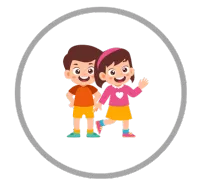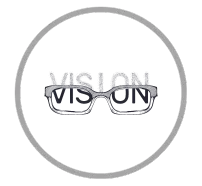Understanding Dyslexia
Exploring Vision Therapy for Dyslexia: How It Can Help
FSDAVCFEBFEVSDDVFSD
FSDAVCFEBFEVSDDVFSD
FSDAVCFEBFEVSDDVFSD
What is Vision Therapy for Dyslexia?
Vision therapy is a program designed to enhance visual skills essential for reading and learning, particularly for those with dyslexia. Dyslexia is a learning disorder that affects the ability to read and interpret words, letters, and symbols, but does not impact overall intelligence.
Through targeted exercises, vision therapy helps improve eye coordination, focus, and visual processing speed. While it is not a cure for dyslexia, this therapy can significantly improve reading and learning experiences for individuals facing visual processing difficulties related to the disorder. It helps address issues like eye alignment and tracking, making reading more manageable and less frustrating.
Vision therapy is a program designed to enhance visual skills essential for reading and learning, particularly for those with dyslexia. Dyslexia is a learning disorder that affects the ability to read and interpret words, letters, and symbols, but does not impact overall intelligence.

Through targeted exercises, vision therapy helps improve eye coordination, focus, and visual processing speed. While it is not a cure for dyslexia, this therapy can significantly improve reading and learning experiences for individuals facing visual processing difficulties related to the disorder. It helps address issues like eye alignment and tracking, making reading more manageable and less frustrating.

Benefits of Vision Therapy for Dyslexia
vision therapy offers several benefits for individuals with dyslexia by enhancing visual processing and eye movement control, which are vital for effective reading and comprehension. Many reading challenges stem from the eyes not working together properly, making it difficult for the brain to process visual information efficiently. Vision therapy addresses these issues through personalized exercises that focus on improving eye alignment, tracking, and focus.
These exercises might include following moving objects with the eyes or focusing on specific points at varying distances. Such activities help strengthen the visual system over time, leading to improvements in reading fluency and comprehension. By training the eyes to work together more effectively, vision therapy can alleviate the visual strain and confusion often experienced by those with dyslexia during reading tasks.
For children with dyslexia, early intervention with vision therapy can be especially beneficial. It not only helps in reducing frustration but also improves their overall academic experience. Early therapy can build a stronger foundation for reading and learning skills, promoting confidence and better classroom performance. For more detailed insights into how our programs can help children, visit Kleinwood Vision.
How Does Vision Therapy Work?
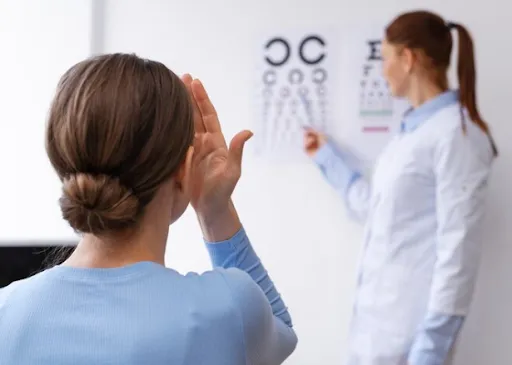
Vision therapy is conducted by an optometrist specializing in vision development and involves weekly sessions along with daily home exercises. Each session includes activities tailored to improve visual skills, such as reading letters from a distance, identifying objects in cluttered spaces, or using prisms and lenses for better eye coordination.
Unlike general eye exercises, vision therapy is guided by a professional who monitors progress and adjusts the plan as needed. This personalized approach ensures that the therapy remains safe and effective, addressing each patient's specific reading and visual challenges.

Vision therapy stands apart from general eye exercises by providing a structured, supervised approach tailored to the unique needs of each patient. The process begins with a comprehensive vision assessment to identify specific visual challenges related to dyslexia or other learning difficulties. Based on the assessment, a customized therapy plan is developed, focusing on exercises that target eye coordination, focusing abilities, and visual processing skills. This plan evolves over time, with the optometrist making necessary adjustments to maximize effectiveness.
Regular monitoring and adaptation are crucial components of vision therapy. As patients progress, the optometrist evaluates their improvement and modifies the exercises to address any ongoing issues or new challenges that arise. This dynamic approach ensures that therapy remains relevant and impactful throughout the treatment period. The professional guidance provided in vision therapy helps in achieving meaningful improvements in reading and learning experiences, especially for those struggling with visual processing issues associated with dyslexia.
Common Vision Therapy Exercises for Dyslexia
Vision therapy exercises are specifically designed to enhance critical visual skills such as eye-tracking, focusing, and coordination. Common exercises include Pencil Push-Ups, where a pencil is held at arm's length and slowly brought closer to the nose while maintaining a single, clear image, helping to improve eye convergence. Tracking exercises involve following moving objects with the eyes, which strengthens tracking skills essential for smooth reading. Another important exercise is Focus Flexibility, which involves switching focus between near and far distances, promoting better focus flexibility.
These exercises are not one-size-fits-all; they are regularly updated to match the progress and specific needs of each individual. The personalized approach ensures that the therapy remains effective and continues to address any emerging visual challenges. For a comprehensive look at our customized vision therapy exercises, Follow us.
Integrating Vision Therapy with Other Dyslexia Interventions
Vision therapy can significantly improve visual processing issues related to dyslexia, but its effectiveness is often enhanced when combined with other interventions like educational therapy, phonics-based programs, and cognitive training. Integrating these approaches creates a comprehensive plan that addresses both the visual and cognitive components of dyslexia. For example, combining vision therapy with structured literacy programs can simultaneously strengthen reading skills and visual processing abilities.
Each child's needs are unique, making a multi-disciplinary approach, including vision therapy, a valuable strategy for balanced improvement. This tailored approach ensures that all aspects of dyslexia are addressed effectively. To explore further options for managing dyslexia, check out our Dyslexia Management resources on Kleinwood Vision.
Vision therapy can significantly improve visual processing issues related to dyslexia, but its effectiveness is often enhanced when combined with other interventions like educational therapy, phonics-based programs, and cognitive training. Integrating these approaches creates a comprehensive plan that addresses both the visual and cognitive components of dyslexia. For example, combining vision therapy with structured literacy programs can simultaneously strengthen reading skills and visual processing abilities.
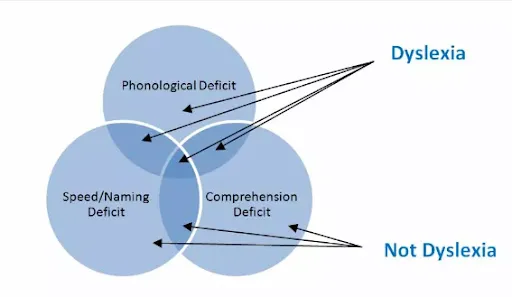
Each child's needs are unique, making a multi-disciplinary approach, including vision therapy, a valuable strategy for balanced improvement. This tailored approach ensures that all aspects of dyslexia are addressed effectively. To explore further options for managing dyslexia, check out our Dyslexia Management resources on Kleinwood Vision.

Choosing the Right Vision Therapy Program for Dyslexia
Selecting the right vision therapy program is essential for achieving the most effective results. This process begins with a thorough understanding of the specific visual challenges faced by the individual, which allows for the creation of a tailored program designed to address those needs. At Kleinwood Vision, we emphasize the importance of detailed evaluations to pinpoint the exact visual issues related to dyslexia. By identifying these issues accurately, we can develop customized therapy plans that cater to the unique requirements of each patient.
Our comprehensive evaluations involve assessing various aspects of visual function, including eye coordination, focusing ability, and visual processing. These assessments help us understand how visual difficulties might be impacting reading and learning. Based on the evaluation results, we craft a personalized vision therapy plan that integrates exercises and strategies specifically designed to improve the identified visual challenges. This tailored approach ensures that the therapy is both effective and relevant to the individual's needs.
For parents and guardians, it is crucial to consult with our vision specialists to gain a clear understanding of how vision therapy can fit into a broader dyslexia intervention strategy. Our specialists are available to explain the integration of vision therapy with other educational and therapeutic approaches. For more information about our evaluation process and how we develop personalized therapy plans, please visit our Vision Therapy Evaluation page This resource will provide additional insights into our approach and help guide you through the next steps.
Is Vision Therapy Effective for Adults with Dyslexia?

While vision therapy is frequently associated with children, adults with dyslexia can also benefit from targeted exercises designed to enhance reading and visual processing skills. This therapy helps reduce visual stress, improve eye coordination, and boost overall reading efficiency. Adults undergoing vision therapy often experience fewer headaches, less eye strain, and better concentration during reading tasks.
If you are an adult struggling with dyslexia and are interested in exploring whether vision therapy might be beneficial for you, visit our Adult Vision Therapy page for more information. This resource provides insights into how vision therapy can address adult dyslexia challenges and improve reading performance.
While vision therapy is frequently associated with children, adults with dyslexia can also benefit from targeted exercises designed to enhance reading and visual processing skills. This therapy helps reduce visual stress, improve eye coordination, and boost overall reading efficiency. Adults undergoing vision therapy often experience fewer headaches, less eye strain, and better concentration during reading tasks.

If you are an adult struggling with dyslexia and are interested in exploring whether vision therapy might be beneficial for you, visit our Adult Vision Therapy page for more information. This resource provides insights into how vision therapy can address adult dyslexia challenges and improve reading performance.
Next Steps: Getting Started with Vision Therapy for Dyslexia
If you or your child is facing challenges with dyslexia and suspect that visual processing difficulties might be contributing to the issue, scheduling a consultation for a vision therapy evaluation could be beneficial. By identifying the specific visual needs and creating a customized vision therapy plan, you can address underlying issues that may be impacting reading and learning outcomes. This personalized approach is essential for developing effective strategies to improve overall reading performance and reduce dyslexia-related frustrations. Early intervention can make a significant difference in achieving long-term success and academic improvement.
For more information or to arrange an appointment, please Contact Us today . Our team of experienced professionals is ready to assist you throughout the evaluation and therapy process, ensuring you receive the guidance and support needed to enhance your visual skills and academic experience.

Contact Info
Hours of Operation
Mon - Fri | 9:00 AM - 5:00 PM
Sat - Sun | Closed
Holiday Hours: We are closed for the following holidays: New Years Day, Memorial Day, Independence Day, Labor Day, Thanksgiving Day, Christmas Day
© 2025 Kleinwood Vision. All rights Reserved.
